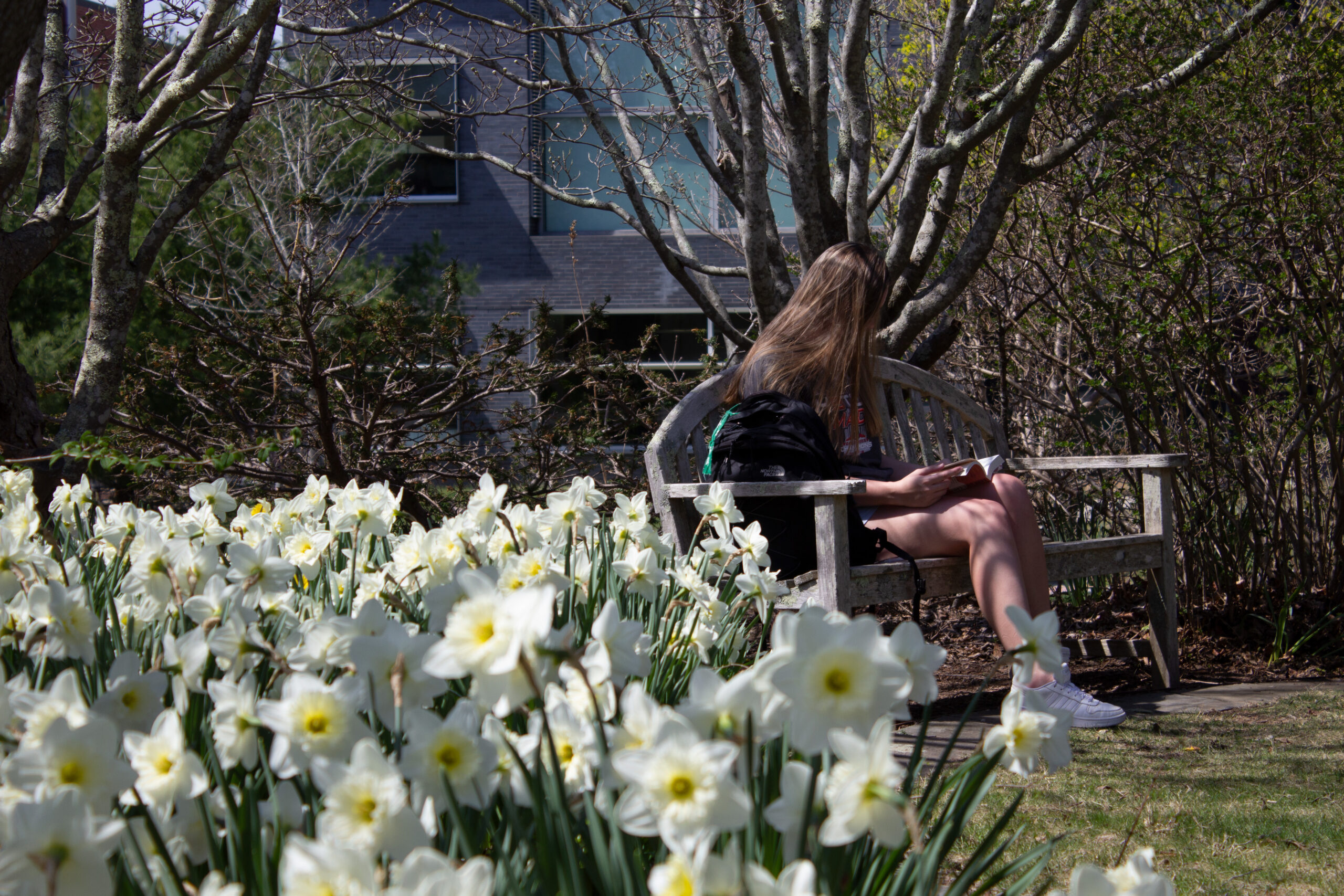Pictured: URI botanical gardens PHOTO CREDIT: Lauren Drapeau | Contributing Reporter
There are many factors as to why April is the season of springtime growth, but what else helps plants grow besides rain?
According to Andrew Elefante, co-owner of Nielsen-Elefante Nurseries, one of the main components for when seeds are looking to sprout is due to the temperature of the soil.
“The real thing that matters to those seeds is soil temperature, not an air temperature, of 50 degrees,” Elefante said. “You can put your grass seed down before the 50-degree temperature break, but it’s not going to germinate till the soil reaches 50 degrees.”
Without this increase in soil temperature from the previous winter season, new seeds will not be able to sprout. Spring germination is important for plants to grow, as this is their most crucial time for survival, and if this threshold is not met by soil temperature, seeds will not reach maturity. Seeds can also be permanently damaged if an unusual cold spell makes soil temperatures decrease below 50 degrees even if they have already sprouted, according to Horticulture.com.
Temperatures of soil do not mirror the temperatures of the air, instead, soil is warmed by the conduction of sun rays. This means the direct rays of UV sunlight travel slowly through the soil to heat up the deeper levels, according to Horticulture.com, which is why soil temperatures can change drastically. Soil is also able to retain heat for longer periods of time, even when the outside temperature dips below the ideal temperature of 50 degrees Fahrenheit.
Soil also retains heat in other ways besides relying on sunlight. Moisture in the soil because of water retention is another important method in warming soil. Highly drainable soils, such as sandy soils in Rhode Island, can retain more heat, according to Penn State Extension. This is why creating moisture within a covered plant is beneficial to its survival because the plant is needing this warmth in order to activate the seedling.
Mulch is another way to bring more heat into your soil and increase the survival of seedlings. The nutrient-rich, dark mulch that is placed on top of preexisting soil is able to retain heat and warm the soil faster than it would naturally, according to Penn State Extension.
“Studies have shown that during the day this [mulch] can raise soil temperature 5 degrees at a depth of 2 inches, and 3 degrees at 4 inches deep,” According to Horticulture.com.
With all the right factors of temperature, rain and seed survival, plants during this time of year are able to start their growing season. In order to figure out what plants grow well in a certain region, Elefante mentioned that there are “zones” of survival for plants.
According to the US Department of Agriculture, the “Plant Hardiness Zone Map” shows the US is categorized into sections to determine the best types of plants that will survive in a location. The map is based on the average winter temperature of that region and this factor, along with yearly spring temperatures, is able to show landscapers, like Elefante, when and where to plant successful species.
If you’re looking to start planting some seeds yourself, don’t forget to bring the heat!





